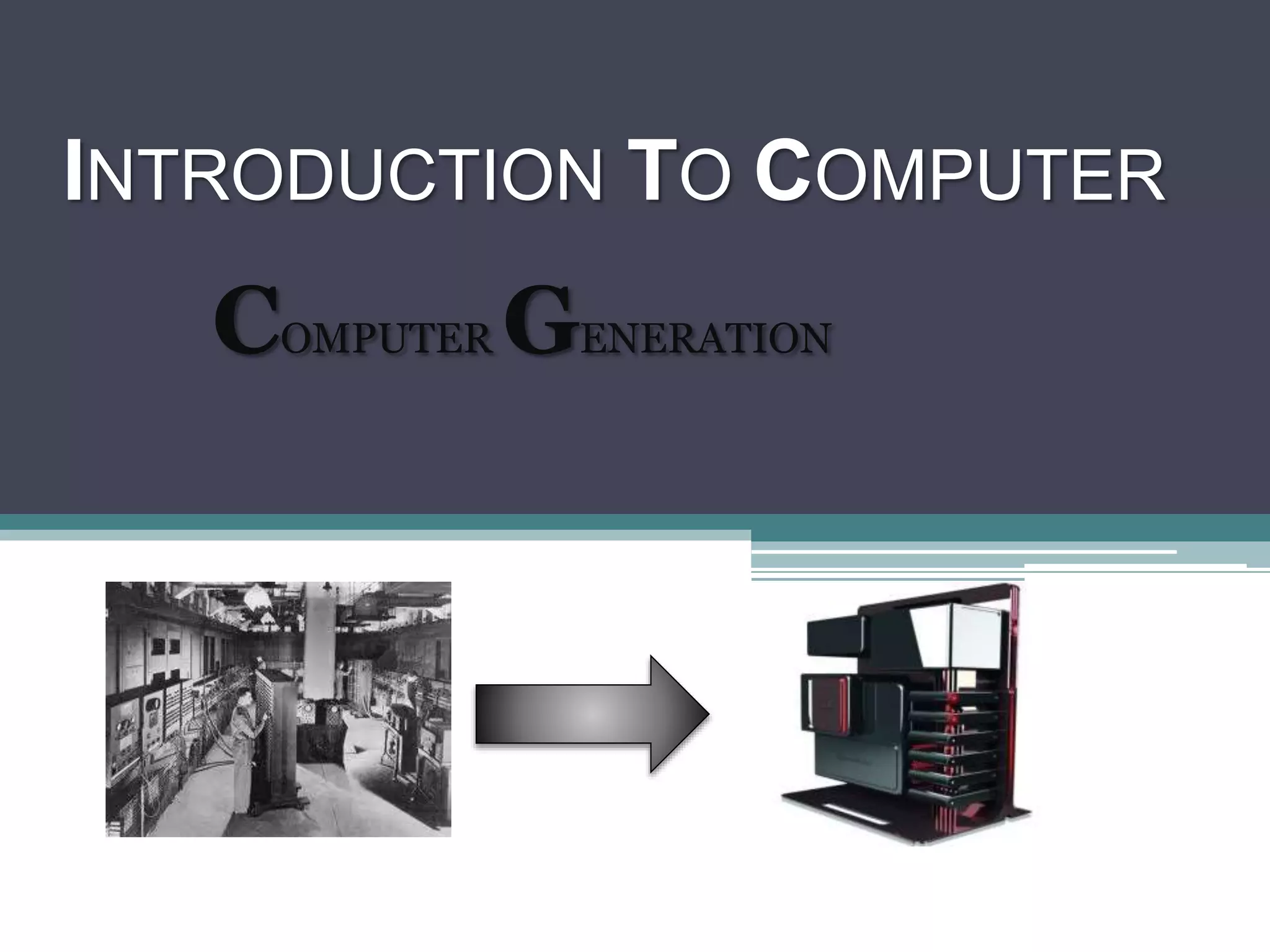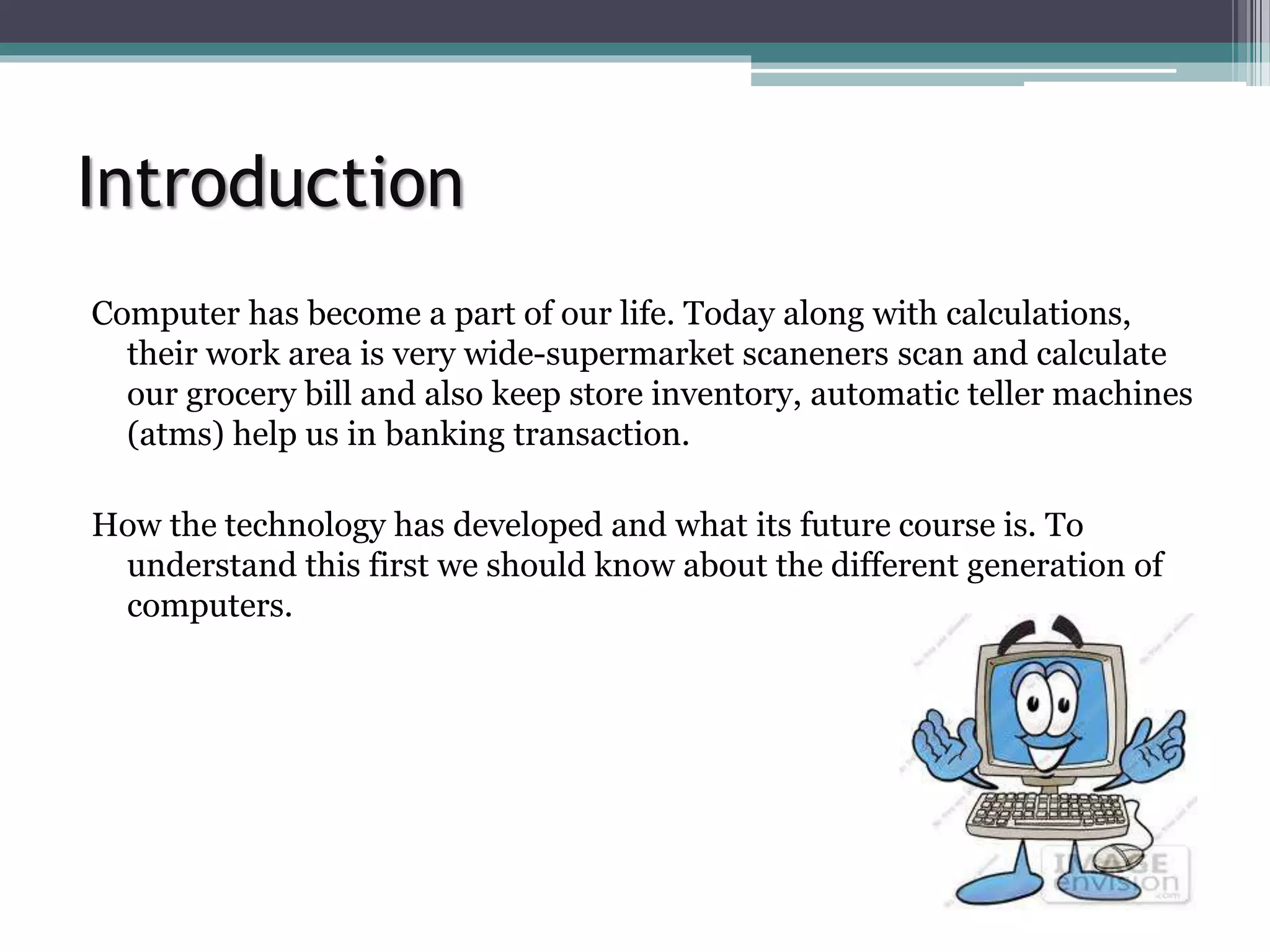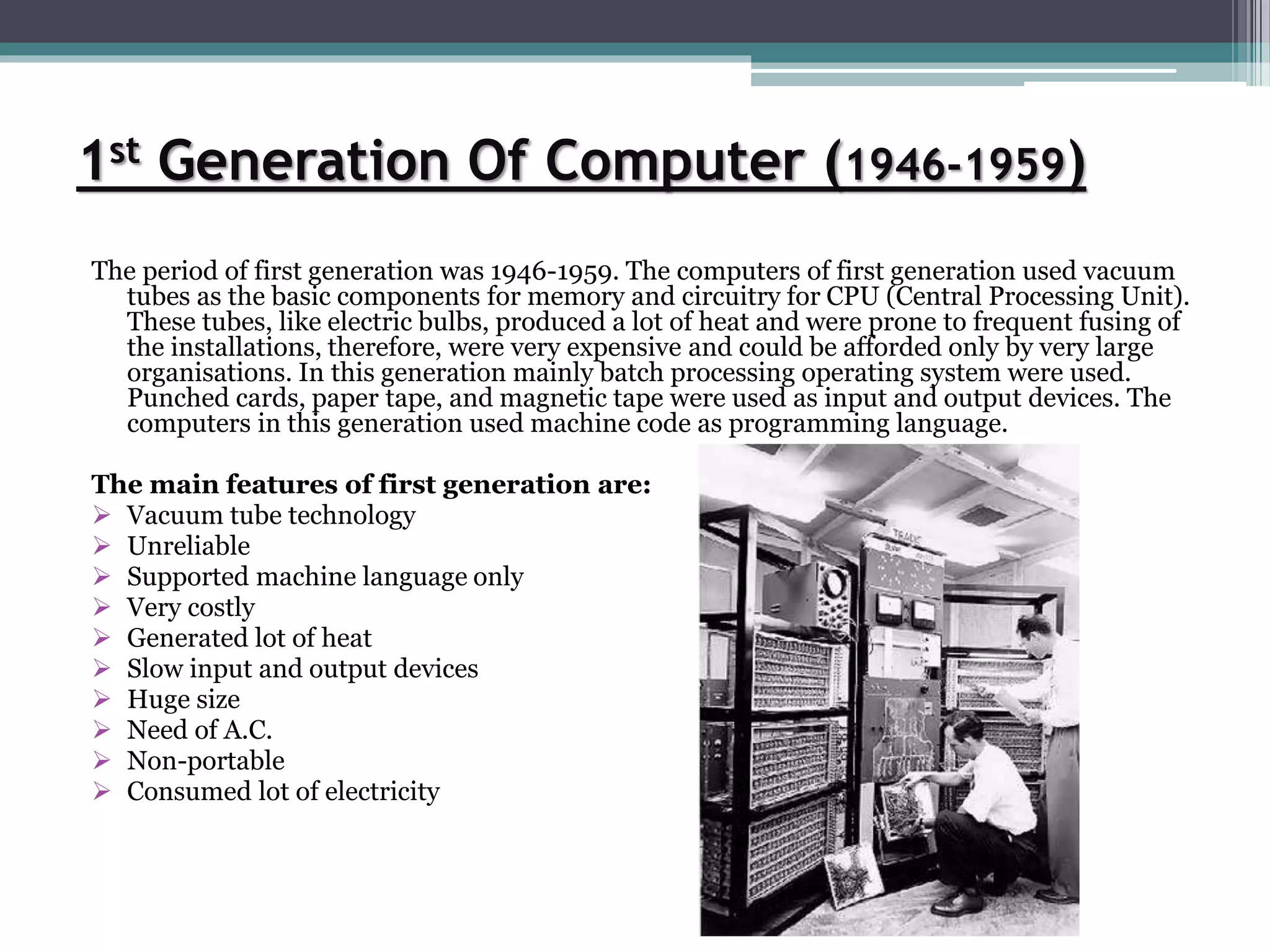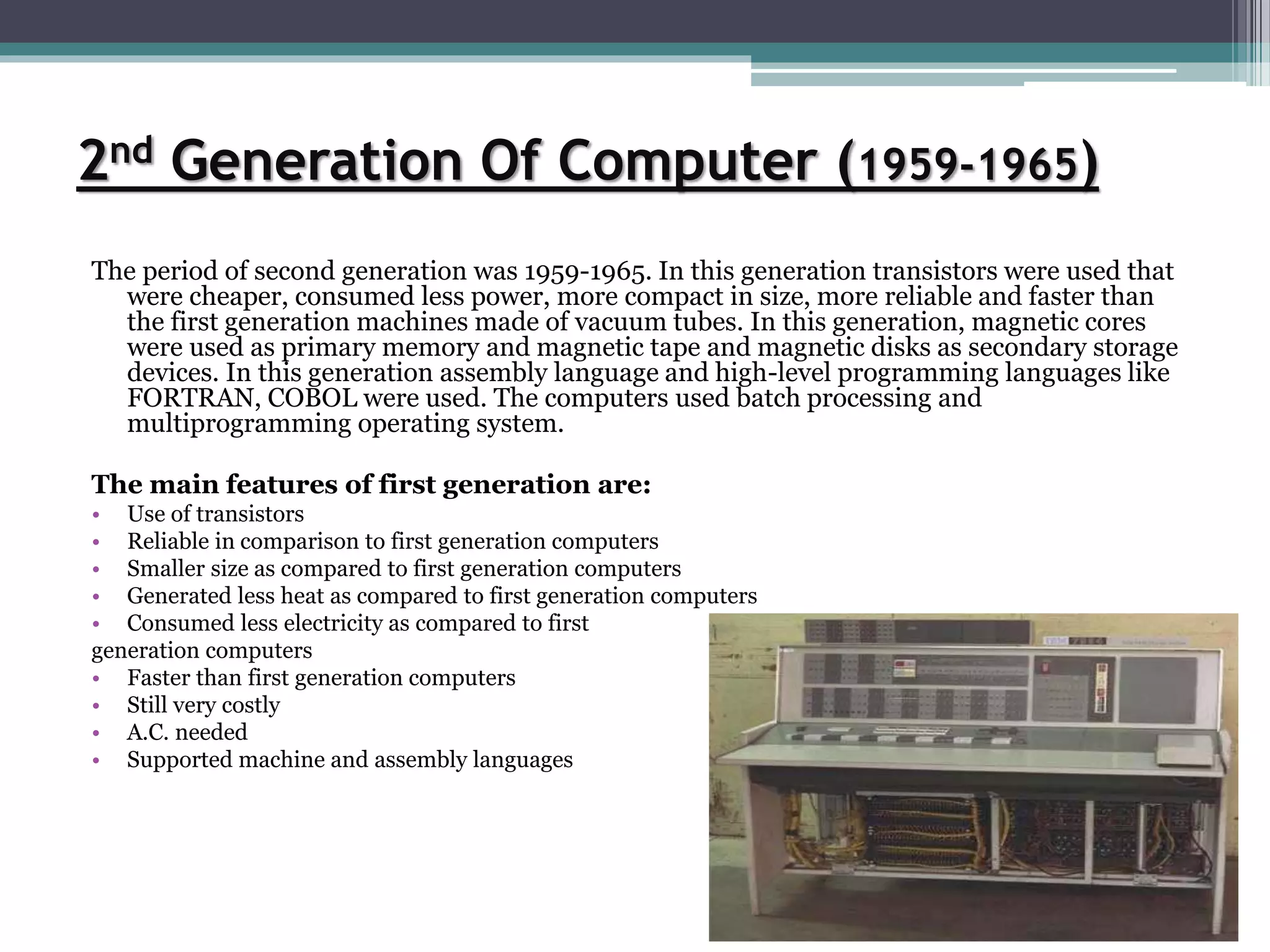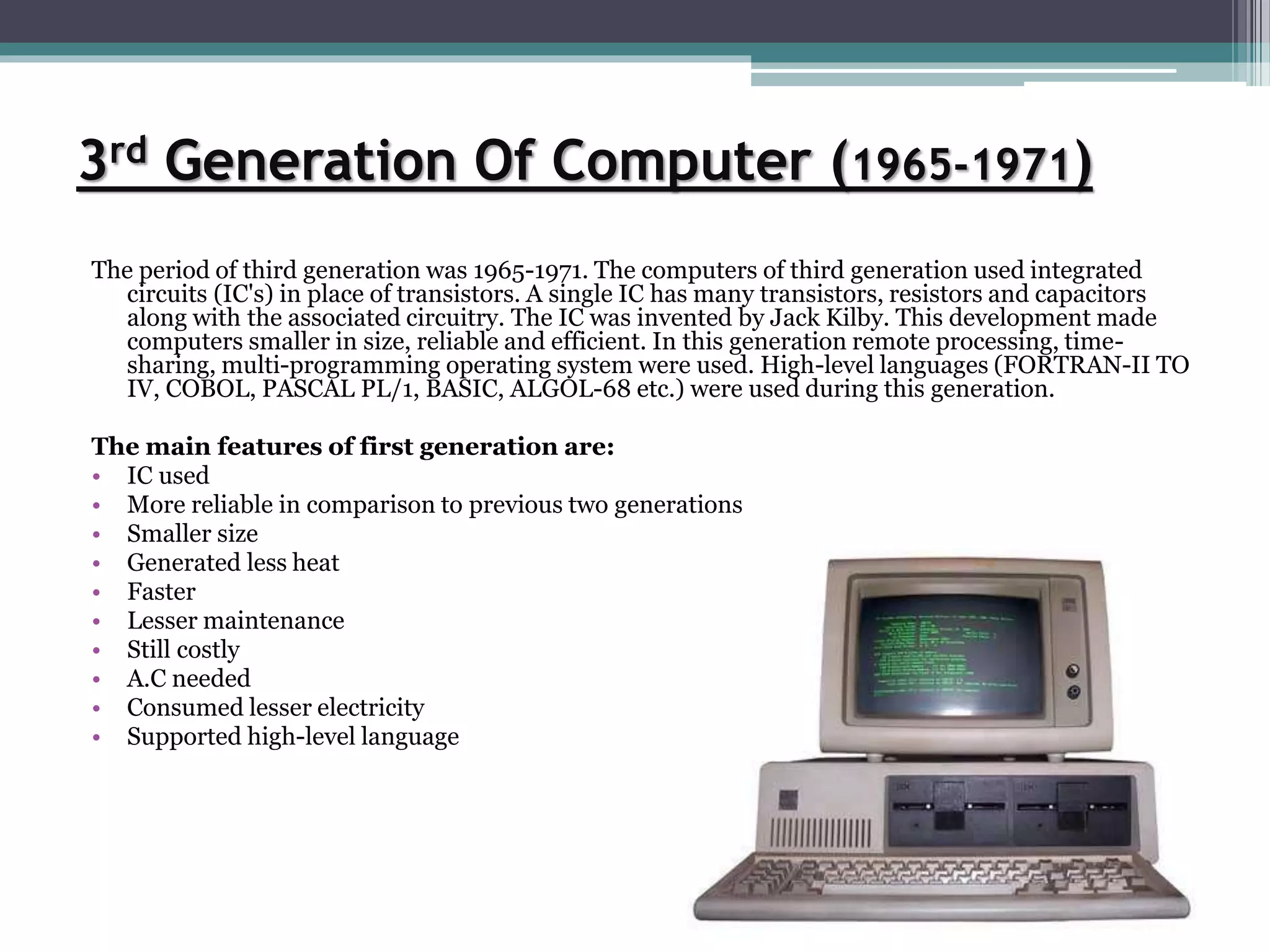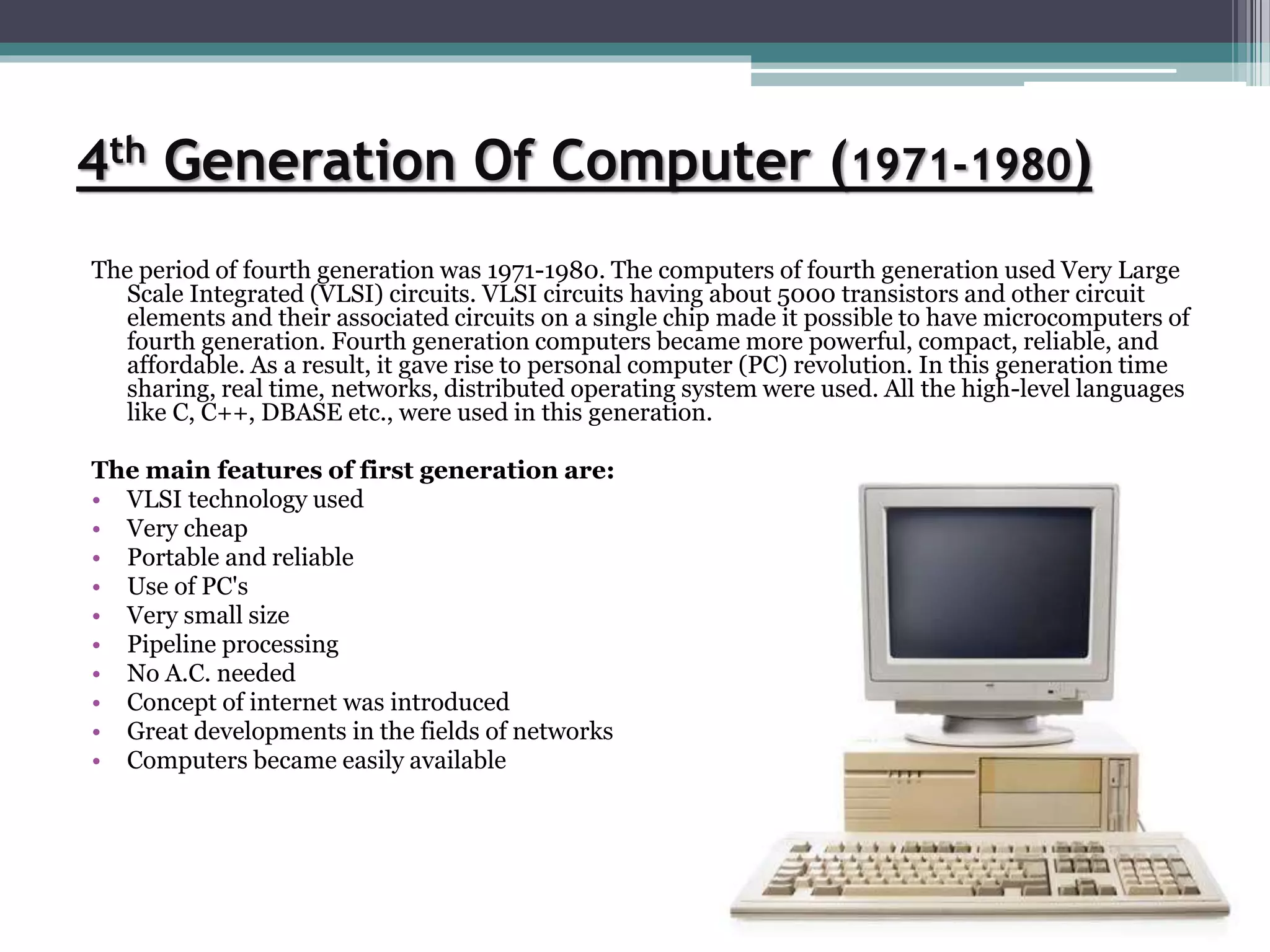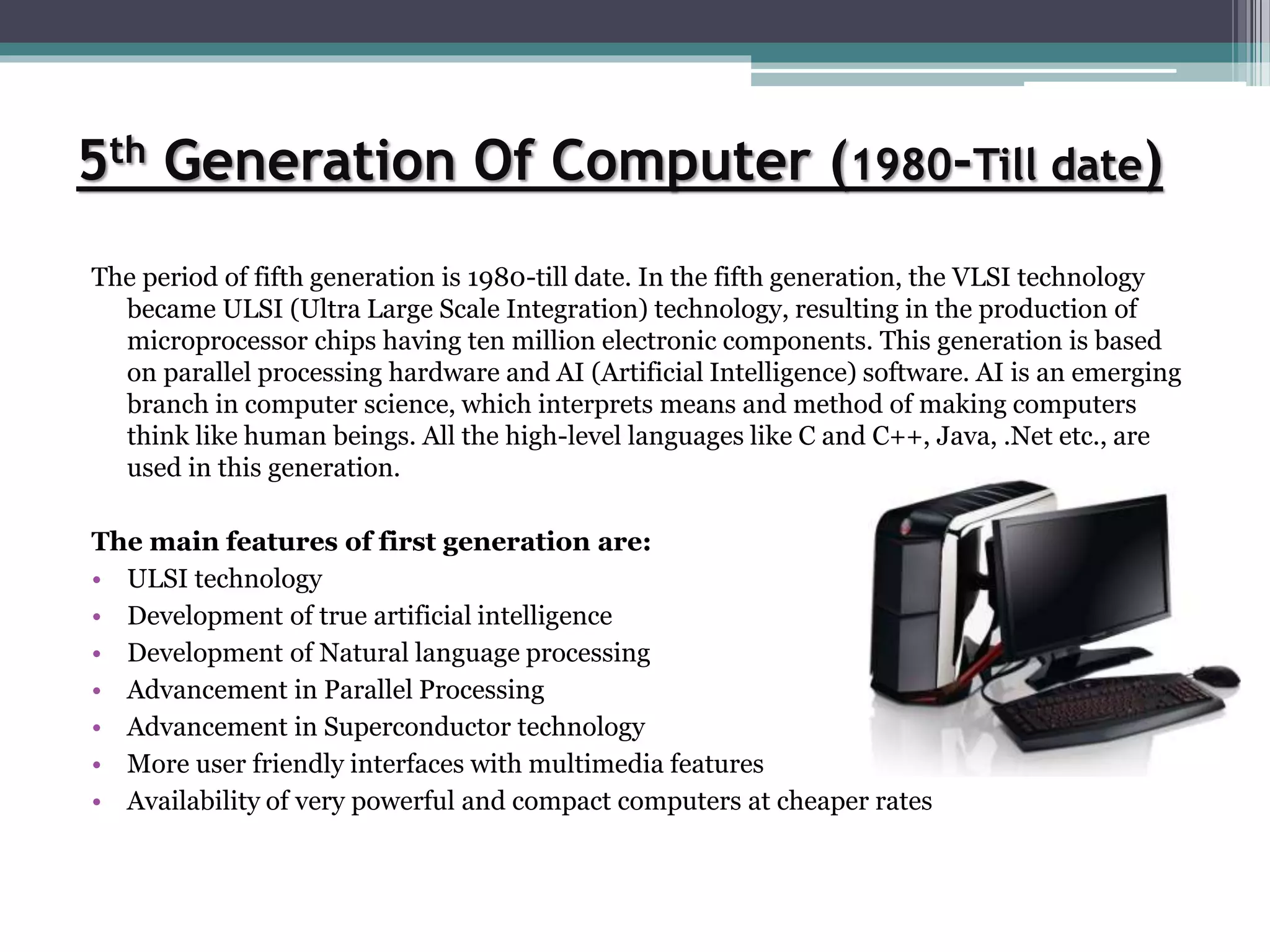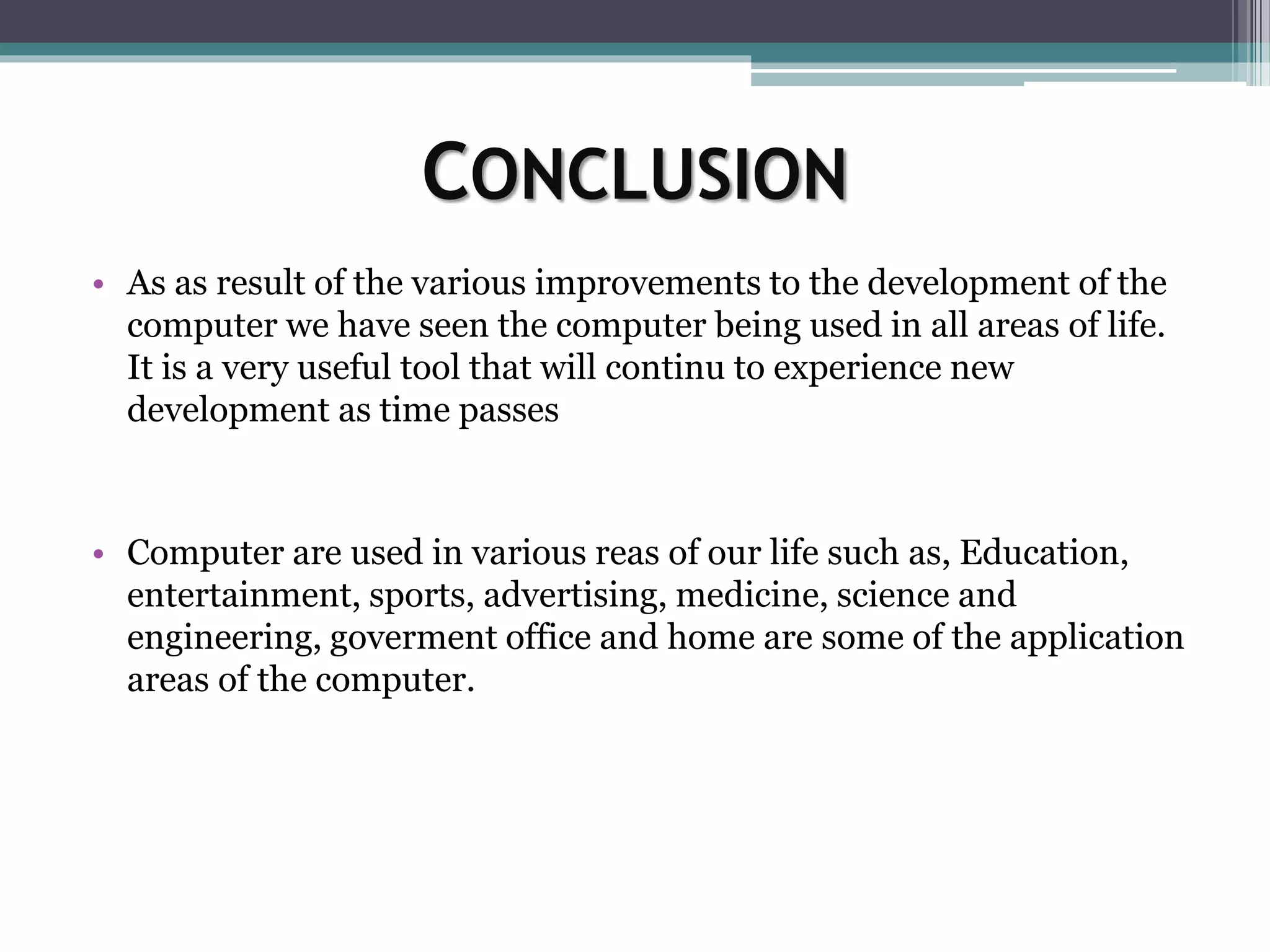The document discusses the five generations of computers from 1946 to present. The first generation used vacuum tubes and were very large, expensive, and generated a lot of heat. The second generation introduced transistors, making computers smaller and more reliable. The third generation used integrated circuits to make computers even smaller and faster. The fourth generation used microchips and VLSI circuits, leading to the development of personal computers. The fifth generation continues advancing computer technology through parallel processing and artificial intelligence.
